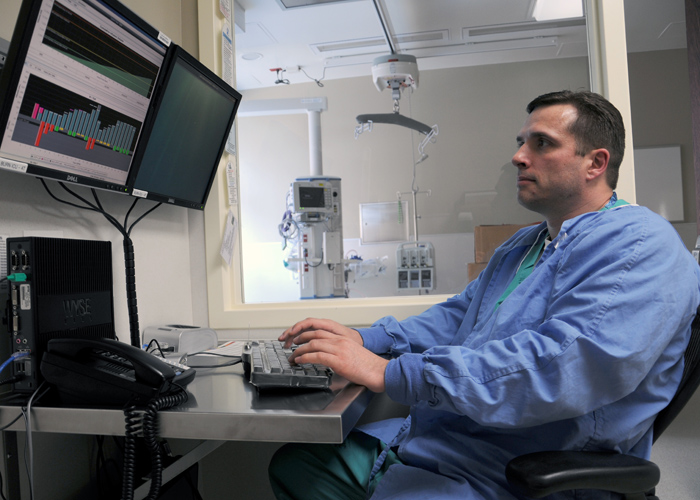BRDSS-C Receives 510(k) Clearance from FDA

"This is the first time that the USAISR has been able to take a medical device from a blackboard concept to a full Food and Drug Administration 510(k) clearance using our newly developed internal quality system," said Jose Salinas, the Comprehensive Intensive Care Research, Single/Multiple Organ Support, and Vital Tissue Preservation task area manager at the U.S. Army Institute of Surgical Research at Joint Base San Antonio-Fort Sam Houston, Texas. "This marks the beginning of a new model for medical device development within an Army research institute."
Salinas is talking about the Burn Resuscitation Decision Support System-Clinical that was developed for use by burn personnel to manage and optimize fluid resuscitation of severely burned patients admitted to the USAISR Burn Center. According to Salinas, the USAISR team was able to conceptualize, test and provide the necessary data to the FDA for clearance of the system without requiring sponsorship from a medical device company.
"We first discussed the concept of computer-based decision support systems for burn resuscitation at the USAISR in 2005. We wanted to explore the possibility of developing an algorithm that would assist providers to improve fluid management in severely burned patients that could also potentially improve their outcomes," said Salinas.
A related technology from the USAISR (BRDSS-Mobile/Burn Navigator) received the same clearance in 2013, but the work was handled by Arcos Medical, Inc. of Houston through a collaborative agreement with the USAISR.
"This process involved granting a technology license to Arcos to commercialize the technology and also get the FDA 510(k) clearance with ongoing collaboration and assistance from the USAISR," said Maria Serio-Melvin, program director for Information and Computer Decision Support Systems and FDA program manager for Decision Support Software Medical Devices for Salinas' task area.
The clinical and mobile algorithms are designed to assist care providers in avoiding problems related to over- or under-resuscitating burn patients, a potentially fatal issue. However, the BRDSS-C has been designed and implemented for use by experienced burn providers and includes recommendations and rules tailored for burn experts. The Burn Navigator, on the other hand, was designed for field deployment and use by non-expert users with little or no burn care resuscitation expertise.
"Because this system is designed to assist care providers with decisions, it will also help relieve anxiety and stress, and validate decisions while taking care of severely burned patients," Serio-Melvin said.
The goal is to have both systems working together seamlessly. Right now, a Burn Navigator used in a deployed setting can be transferred with a patient through the different care settings in a warzone. In the future, we are hoping that once a patient arrives at the Burn Center for definitive care, the data from the Burn Navigator will be imported into the BRDSS-C for uninterrupted care.
"And now we have two products to assist with resuscitation of burn patients," said Salinas.
Salinas added that while the Burn Navigator is designed for battlefield use, multiple Burn Navigators could also be used stateside during a mass casualty scenario to treat numerous burn patients.
"It would be helpful for the care provider because all of the fluid resuscitation data would be readily available on the Burn Navigator for each patient," he said.
Although both systems are working as designed, Salinas said that he and his team are looking forward.
"We want to push the envelope and design a system that will automatically resuscitate a burn patient without human intervention in some cases," Salinas said. "The USAISR is at the forefront of technology and we've been asked by the FDA to work on this concept as part of a larger initiative on autonomous systems for the critical care environment."
"We wouldn't be here without the unwavering support of the U.S. Army Medical Research and Materiel Command ," said Serio-Melvin. "Now we have two products to assist with the resuscitation of burn patients."














